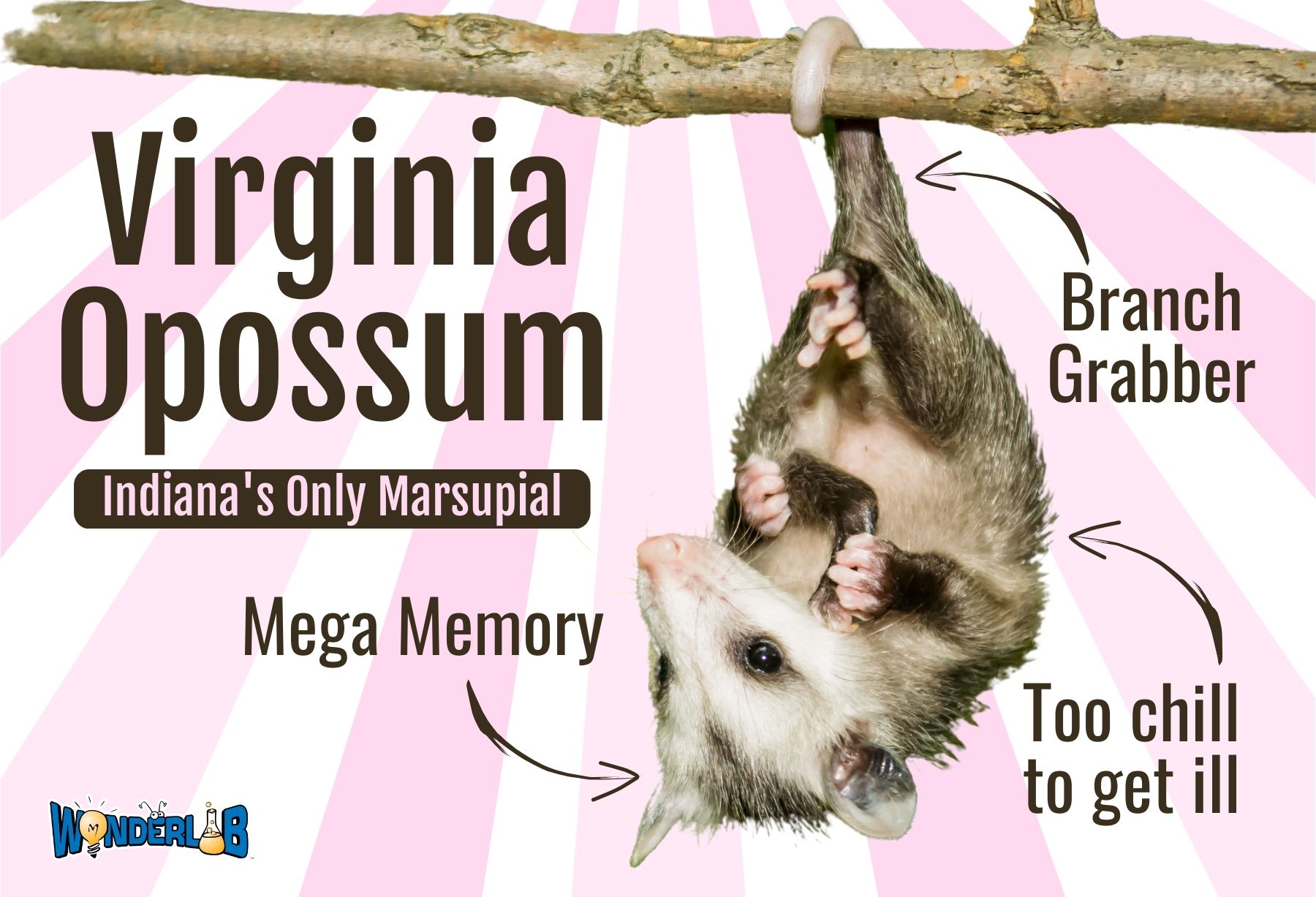
When night falls and the moon is high, a curious creature awakens from its slumber. With opaque, beady eyes, a slow-moving yet agile body, a hairless pink tail, and opposable thumbs – such a sight emerging from the darkness would send shivers down anyone’s spine.
So what is this odd, nocturnal animal? Far from frightening, it is a floofy Virginia opossum! Despite their peculiar appearance, opossums are harmless and fascinating critters that provide many benefits to humans. Virginia opossums (Didelphis virginiana) are Indiana’s only native marsupial. Actually, they are the only marsupial that lives north of Mexico.
A distinctive characteristic of all marsupials is the pouch at the front of their belly for holding their young. Like other marsupials, opossums are pregnant for a very short time before giving birth– about 13 days! Opossum babies are as tiny as the honeybees we have here at WonderLab. That’s really small! After they’re born, the babies climb their way to the fur-lined pouch where they will live for the next 6-8 weeks. Once their time in the pouch is up, the babies then spend an additional two months riding their mom’s back as she engages in her normal day-to-day activities– from climbing trees and trash cans to scavenging for food.
Mega Memory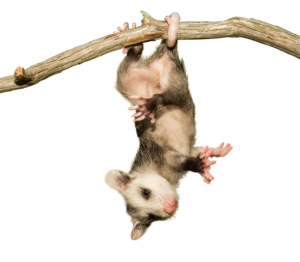
Virginia opossums have a brain one-fifth the size of a cat’s brain. That’s smaller than a walnut! Their brains are also rather smooth and lack the folds and grooves that can be observed in humans and other primates. But don’t let their incredibly small and rudimentary noggins fool you; studies have shown that they score higher than dogs in intelligence, and can complete mazes faster than both cats and rats. Virginia opossums are even thought to be able to recall smells up to a year after exposure.
Branch Grabber
Sleeping as they hang from trees is one of the most common ways opossums are depicted; however, is that accurate? Not so much. The Virginia opossum is equipped with a prehensile tail, but the muscles in its tail are not strong enough to swing from branch to branch like a monkey, or even hang for extended periods of time. Although it is adorable to see photos of baby opossums hanging upside down from a branch, they can only do this for brief moments when maneuvering in a tree. Their hairless tails can act as a fifth appendage, grabbing onto food or other items such as sticks and leaves.
During the cold months, their naked tails and toes are exposed to the harsh conditions of winter, sometimes leading to frostbite. They don’t hibernate, but it is safe to say that these critters spend most of the winter cozying up within their warm dens, away from the frigid air.
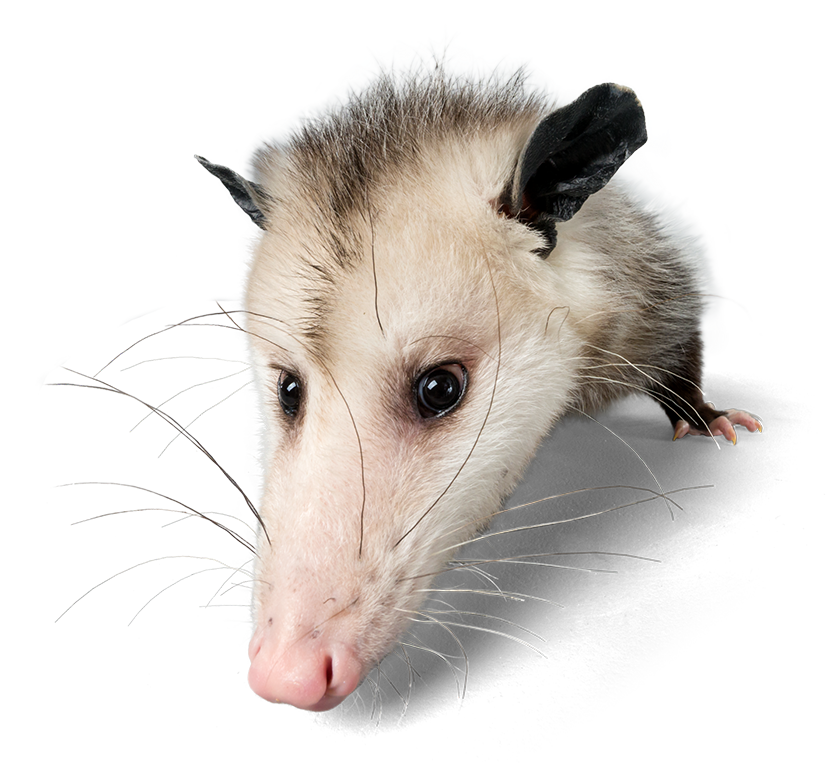
Too Chill to Get Ill
Are Virginia opossums tick-eating machines? Opossums have gained a reputation as heroes, gobbling up ticks and mosquitoes by the thousands every summer. However, opossums might not gobble up as many ticks as we once thought. In a 2021 study, opossum stomachs were thoroughly searched for ticks and tick parts for any sign of digestion. The results of this and other studies showed that ticks are not a preferred part of their diet, but are mostly consumed as a result of grooming. Okay – so Virginia opossums aren’t tick-devouring legends, but they still have many fascinating attributes. While ticks might hitch a ride on a passing ‘possum, it is highly unlikely to transmit Lyme disease to their host. It is believed this is due to their lower body temperatures (94-97 degrees Fahrenheit). Lyme disease is unable to thrive within the Virginia opossum’s colder internal climate.
Not only can Virginia opossums ward off Lyme disease, but their bodies are also impervious to snake venom. You heard that right– snake venom. Opossums laugh in the face of death as they can endure up to 80 rattlesnake bites without surrendering to the venom’s effects. What is the key to their resistance to rattlesnake venom? A venom-neutralizing peptide found within their blood. From this 11-chain amino acid, scientists have been able to produce an antivenom that could save lives. Perhaps Virginia opossums are heroes after all.
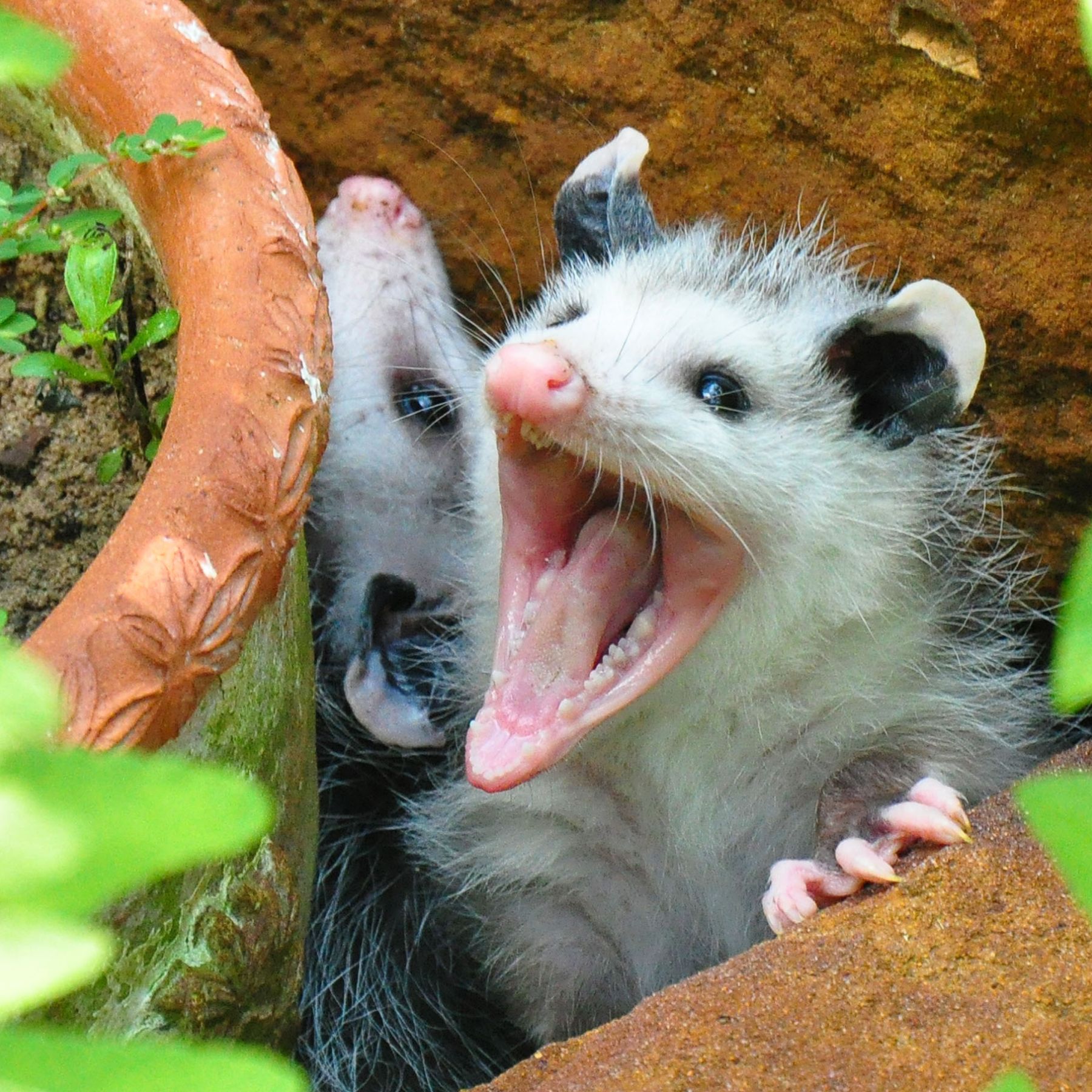
About the Author:
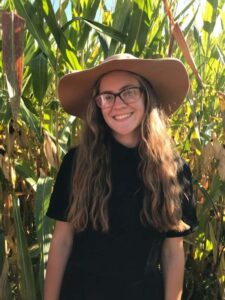
Tavia Hedrick is a development intern at WonderLab. She grew up in Terre Haute, Indiana watching ant hills, going on adventures into the woods with her nana, and searching for cool rocks for hours on end. Tavia has always felt a deep connection to nature and is continuing her studies in environmental science and public affairs to become a voice for those who cannot speak for themselves. She is grateful to have the opportunity to shed new light on the frighteningly beautiful creature that is the Virginia opossum.
References
“Why Do Opossums Hang Upside Down By Their Tails?” (2011, Jan. 5) Moment of Science. Accessed January 18, 2023 from https://indianapublicmedia.org/amomentofscience/opossums-hang-upside-tails.php
Hennessy, C and Hild, K. (2021, Sept.). “Are Virginia opossums really ecological traps for ticks? Groundtruthing laboratory observations”. Ticks and Tick-borne Diseases. Volume 12, Issue 5, 2021,101780, ISSN 1877-959X.
“Opossums & Ticks – are they really eating those 8-legged pests?”(2022, Jan 29) Severson Dells Nature Center. Accessed January 18, 2023 from
https://www.seversondells.com/blog/opossums-and-ticks
“Virginia Opossum – Didelphis virginiana. NatureWorks, New Hampshire PBS. Accessed January 18, 2023 from https://nhpbs.org/natureworks/opossum.htm

Leave A Comment